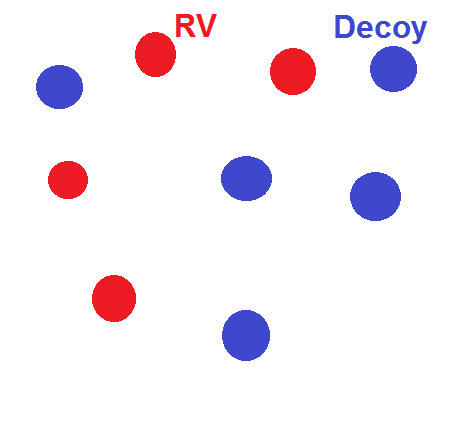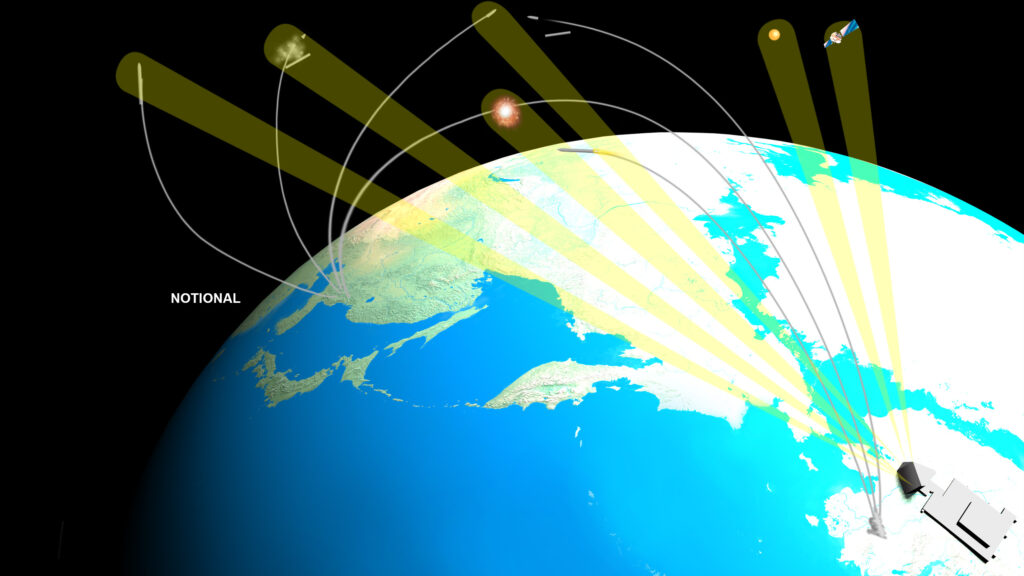The Army's Homing Intercept Technology (HIT) is now in its third stage and will be ground-tested in a chamber under contract with LTV Aerospace Corp. to determine if the small, lightweight (a few pounds) warhead can home on simulated targets and deploy its kill mechanism for point detonation.
Prior to the signing of the anti-ballistic missile treaty and interim offensive ICBM weapons agreement in May, 1972, the Army was developing the Homing Intercept Technology program for use as multiple independently-targetable interceptors.
The ABM treaty prohibits multiple interceptors in a single booster, even if the work is merely a feasibility study of the concept, according to a Pentagon official. The Army reviewed the program in light of the provisions of the ABM treaty prohibiting development, test or deploy-ment of ABM interceptors for the delivery of multiple warheads.
The Homing Intercept Technology program developments now under contract are not prohibited by the treaty and are continuing, a Pentagon official said. He added that the final phase originally planned, launching cluster warheads, has been canceled.
Homing Intercept Technology is designed to provide an optically-guided, non-nuclear warhead. "Such a warhead, if successfully demonstrated in a ballistic missile defense environment; would permit the NORAD [North American Air Defense] commander, for example, to commit an interceptor without requiring the presidential nuclear release authority, which is inherent in current systems. In addition, a non-nuclear warhead eliminates the problems associated with nuclear explosions, such as radar blackout or distortion, interceptor fratricide [friendly interceptor killing another] and perturbed environment in general," an Army official said.
Homing Intercept Technology is adaptable to mass-production without requiring the use of nuclear materials and more economical "than a system providing equal effectiveness but using nuclear warheads. HIT, as-a non-nuclear warhead concept, offers the promise of very high lethality, without the need for complicated fuzes, auxiliary sensors, or sophisticated communication links," Army officials added.
Its propulsion system is a cluster of small rocket tubes wrapped around the optical sensor package containing a small digital computer and control mechanism. The rocket tubes also function as the kill mechanism for point contact with a reentry vehicle. The entire package is spin stabilized at a very high spin rate, according to Defense Dept. officials. The warhead's terminal homing device detects the target, and the computer maneuvers the device by firing the rockets to conduct the intercept. On signal, the rods are placed in the path of the incoming reentry vehicle, destroying it.
Under the original concept, or if the treaty is abrogated by either party, a large number of the small warheads would be used on an improved Spartan interceptor and they would provide a "cumulative probability" of detecting, tracking and destroying reentry vehicles, a Pentagon official said. Because the treaty prohibits multiple warheads on a single booster, "they could be developed for use on a much smaller booster and HIT will likely be tested with a single warhead on a small booster," the official added.
Under the Homing Intercept Technology concept, the interceptor would be command-guided by ground-based radar until reaching a high altitude.
Under the multiple concept, which officials' stress is not being developed, a large optical sensor would be operated on the Spartan to detect targets at very long ranges. On command the smaller warheads would be deployed with their smaller optical sensors used for terminal homing. The large electro-optical system is designed to have the capability of discriminating reentry vehicles from chaff, penetration aids or decoys, officials said. They added that the technology could also be used in an anti-satellite mission.
...
A non-nuclear warhead could be one of several types, including a rod flechette or pellet configuration. "Not much warhead design effort is in progress now, but a fair amount of effort has gone into them in the past. It is a straightforward approach—with an RV traveling at about 24,000 fps. All we have to do is to put a-pattern like buckshot in front of that RV and it "provides the necessary velocity for destruction. The major warhead effort now is to establish homing devices that will insure a high probability of kill and deployment of the warhead at very small miss distances," a Pentagon official said.
"We are talking about warhead particles that weigh about 100 grains and depleted uranium is one example of a good substance to use. It makes a good kill mechanism. We can calculate the pattern and probability of a hit on an RV that presents a certain cross-section," he added.





